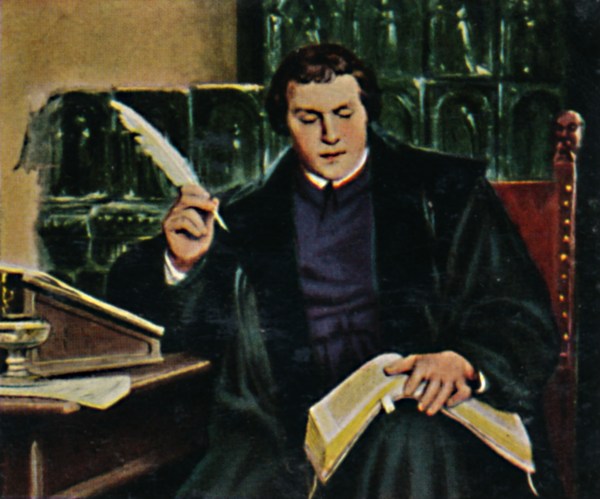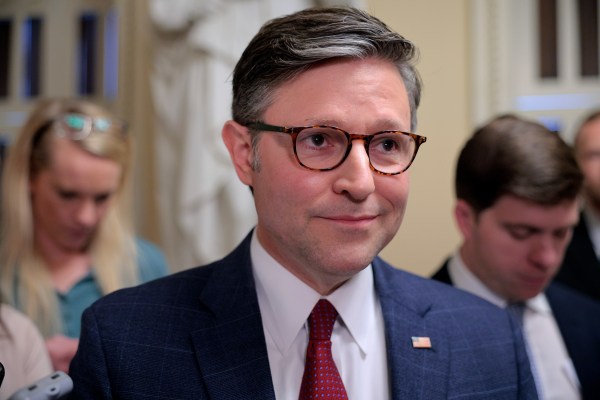If you’d nearly forgotten about the ongoing work of Special Counsel John Durham, you’re not alone. The lawyer was appointed by Attorney General William Barr in 2019 to review the origins of the Russia investigation that bedeviled the early years of Donald Trump’s presidency. Durham has been steadily plugging away at his investigation for years but has made few public moves: His most significant charge so far came last year against Michael Sussmann, a former attorney for Hillary Clinton’s presidential campaign, for one count of lying to the FBI.
That changed last weekend, though, when a new filing from Durham electrified conservative media. In a routine motion concerning conflicts of interest in the Sussmann case, Durham had seemingly revealed new details about the Clinton campaign’s efforts both to suss out supposed connections between Trump’s campaign and Russia and to wheedle federal law enforcement to start trying to do the same.
Much of the story had already been told by Durham in Sussmann’s indictment last September, but it’s worth going over in full again. When in September 2016 Sussmann took to the FBI a bundle of information supposedly linking Team Trump to Russia, he falsely told FBI General Counsel James Baker that he was not doing so on behalf of any client, Durham alleges. In reality, according to the indictment, Sussmann was doing so on behalf of both the Clinton campaign and Rodney Joffe, then senior vice president at the information services firm Neustar.
It’s this alleged lie—which Sussmann denies—that forms the basis of Durham’s charge against him. But it’s the details of what came before that meeting—of how that bundle of information came to be—that have provoked the latest bout of controversy.
According to the new filing, Joffe (referred to throughout as “Tech Executive-1”) used his perch as a leader at a well-placed company—“exploited his access to non-public and/or proprietary internet data,” in Durham’s parlance—to obtain large amounts of raw internet data touching Team Trump, and put his associates to work analyzing it “for the purpose of gathering derogatory information about Donald Trump” in order to please “certain VIPs” at the Clinton campaign and its counsel, the firm Perkins Coie.
Durham’s most explosive assertion—and this was new to the latest filing—was detailing that internet data, which Sussmann had taken again in updated form to the government in February 2017: domain name system (DNS) data connected with, among other entities, “Trump Tower, Donald Trump’s Central Park West apartment building, and the Executive Office of the President of the United States.”
Internet traffic from the White House, exploited by a private actor with ties to the Clinton campaign? It’s not hard to see why conservative media would pick up the ball and run with this, and so they did: Fox News’ report said the Clinton campaign had “paid a technology company to ‘infiltrate’ servers belonging to Trump Tower, and later the White House,” while the Daily Mail asserted that the firm had been paid “to hack into [Trump’s] White House and Trump Tower servers.”
The most histrionic reaction came from the former president himself. “This is a scandal far greater in scope and magnitude than Watergate and those who were involved in and knew about this spying operation should be subject to criminal prosecution,” Trump raged in a statement. “In a stronger period of time in our country, this crime would have been punishable by death.”
Much of this is overbaked—as should be obvious from the fact that Durham has not charged anyone involved with any crimes, other than Sussmann. But the conduct described involving Sussmann, Joffe, and the Clinton campaign is quite sketchy and absolutely newsworthy—provided the facts bear out the narrative Durham is outlining, as will likely be revealed when (and if) the matter goes to trial.
Why was this data collection likely legal? Because Neustar had contractual access to it. The Virginia-based company is one of the world’s largest providers of DNS services, with annual revenue north of $1 billion, and it had a contract to perform such services for the White House.
What, precisely, did the data entail? Describing it as “internet traffic,” as Durham did, is accurate but perhaps slightly misleading to us non-techies—it isn’t synonymous with, say, users’ web history. DNS servers are like internet phone books, translating web addresses that are intelligible to human beings (say, “thedispatch.com”) into IP addresses, the strings of digits that tell a computer where to find the server where that website lives. When one server needs to find another, it consults the DNS server to find out where to look, which the server then logs as a DNS lookup. DNS lookup logs thus don’t tell you what one server is communicating with another—merely that two servers are in communication.
What companies like Neustar offer clients is, in essence, a phone book that stops you from dialing scammers—if a particular server is known to have been used for phishing schemes, for instance, it may swoop in and prevent your computer from establishing a connection with that server. This is why DNS lookups are logged in the first place—if your organization’s being targeted, it’s good to know when and from where.
But Durham alleges that Joffe put this data to use in a way that was anything but routine: “Tech Executive-1 tasked these researchers to mine Internet data to establish ‘an inference’ and ‘narrative’ tying then-candidate Trump to Russia.” In the end, this research bore fruit in the form of a theory of Trump’s ties to Russia—which made its way into the press in the last days of the 2016 campaign—that a “Trump server” was secretly communicating with Russia-based Alfa Bank. (The theory fell apart in days; the “Trump server” in question turned out to have belonged to marketing company Cendyn, which sent marketing emails for Trump hotels.)
In the original indictment of Sussmann, Durham provided an email from Joffe suggesting a motive for his actions: “I was tentatively offered the top [cybersecurity] job by the Democrats when it looked like they’d win. I definitely would not take the job under Trump.”
Whether this sketchy-but-likely-legal behavior persisted beyond the 2016 campaign is unclear. Much of the conservative response to the Durham indictment assumed that the data from the Executive Office of the President Durham mentioned was data from Trump’s presidency; Durham himself seemed to suggest this when he described Sussmann as claiming “that these lookups demonstrated that Trump and/or his associates were using supposedly rare, Russian-made wireless phones in the vicinity of the White House and other locations.”
But Sussmann’s team denied this outright in a subsequent filing, accusing Durham of mischaracterizing the data: “The Special Counsel is well aware that the data provided to Agency-2 pertained only to the period of time before Mr. Trump took office, when Barack Obama was president.” The Sussman filing also heaps scorn on Durham’s “alleged theory that Mr. Sussmann was acting in concert with the Clinton Campaign” in this February 2017 meeting, given that “Mr. Sussmann’s meeting with Agency-2 happened well after the 2016 presidential election, at a time when the Clinton Campaign had effectively ceased to exist.”
All this may be hashed out in court in due course. For the moment, though, what Durham has presented is sufficient to establish this: Joffe, a tech executive with non-trivial ties to the Clinton campaign—they shared a lawyer in Sussmann, and Joffe believed he had been offered a tentative position in a Clinton administration—used his position atop a company with extensive government and private-sector contracts to go digging for information on Clinton’s opponent, an effort in which Sussmann was involved and for which (Durham asserts) Sussmann billed his time to the Clinton campaign.
Sussmann also billed to the Clinton campaign his time spent meeting with the reporter who wrote the initial Trump/Alfa Bank story in late October 2016, according to Durham’s indictment.
When that story went public, Clinton leaned into it heavily, tweeting that it “could be the most direct link yet between Donald Trump and Moscow.”
“Computer scientists have apparently uncovered a covert server linking the Trump Organization to a Russian-based bank,” Jake Sullivan, then a senior policy adviser to Clinton, said in a statement at that time. “This secret hotline may be the key to unlocking the mystery of Trump’s ties to Russia.”
Again, there’s little evidence to suggest any of these actions were actually illegal. But who can look at them without disgust?
None of this is to excuse the Team Trump exaggerations we’ve seen on this story this week. But it is worth noting that one of Trump’s political strengths from the very beginning was his attractiveness to people inclined to believe all politics works like this: a swamp of political elites hobnobbing with business elites and media elites to bring about mutually agreeable ends.
This may be a reductive and oversimple way to view the world. But it’s easy to see how people come by it when you see a story like this, which features a tech executive hoping to land a job with an incoming candidate’s administration, working with that candidate’s lawyer and exploiting government connections to collect dirt on that candidate’s opponent—with an assist from some university researchers for good measure, just to round out the illustration—and then laundering that dirt through chummy relationships with a credulous press. And that’s not even to consider the repeated attempts to get federal law enforcement involved in a wild goose chase.
Of course it wasn’t worse than Watergate. Why would it have been? There’s no need for criminal dirty tricks when you already know all the right people.







Please note that we at The Dispatch hold ourselves, our work, and our commenters to a higher standard than other places on the internet. We welcome comments that foster genuine debate or discussion—including comments critical of us or our work—but responses that include ad hominem attacks on fellow Dispatch members or are intended to stoke fear and anger may be moderated.
With your membership, you only have the ability to comment on The Morning Dispatch articles. Consider upgrading to join the conversation everywhere.